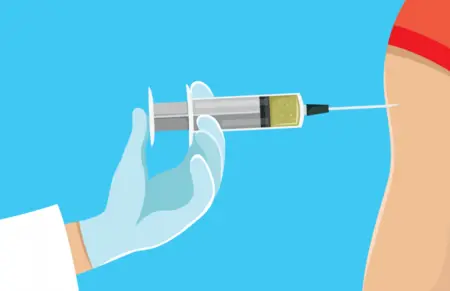Shingles is a disease caused by the varicella-zoster virus — the same virus that causes chickenpox. Anyone who’s had chickenpox may develop shingles. After you’ve had chickenpox, the virus lies inactive in nerve tissue near your spinal cord and brain. Years later, the virus may reactivate as shingles, but not everyone who has had chickenpox will develop shingles. The reason for shingles is unclear. Shingles is more common in people who have weakened immune systems and in older adults, which might be due to a lowered immunity to infections as you grow older. Factors that may increase your chances of getting shingles include being over 50, having certain disease that weaken your immune system, undergoing cancer treatments and taking certain medications, such as prednisone.
You cannot get shingles from someone who has shingles. You can get chickenpox from someone who has shingles if you have never had chickenpox, or never received the chickenpox vaccine. if you’ve had shingles once, you probably won’t get it again but that doesn’t mean it can’t happen. However, you can take steps to help prevent it, or ease it the next time around.
Shingles is a viral infection that causes a painful rash. The rash often appears as a cluster of fluid-filled blisters. Although shingles can occur anywhere on your body, it most often appears as a single strip of blisters that wraps around either the left or the right side of your torso. The next most common location is on one side of the forehead or around one eye.
Shingles usually starts out as a tingling pain, followed by a burning feeling, red rash, blistering, and finally, with the blistering crusting over. You may also experience a fever, chills, headache, raised dots or redness on the skin, itching, stabbing or shooting pain in a localized area, and general weakness. Typically, a rash develops in 1-5 days after you feel numbness or tingling pain. If you have shingles, you are contagious until the last blister has scabbed over, which is usually 10-14 days.
If you develop shingles, it is important you contact your doctor or healthcare provider at the first sign, so he/she can decide on a treatment plan which may include ordering an antiviral medication such as acyclovir. These medicines are most effective when taken as soon as possible after the rash appears.
Many people are able to manage the pain with over-the-counter pain medications. Getting treated early can help shingles go away faster and may help you avoid related problems. Shingles on the face can cause hearing or sight problems, including blindness. Early treatment can also help prevent or ease pain, including pain that lasts after the rash is gone, called post-herpetic neuralgia. If left untreated, some complications of shingles can be fatal. Pneumonia, encephalitis, stroke, and bacterial infections can cause your body to go into shock or sepsis.
The Centers for Disease Control and Prevention (CDC) recommends healthy adults 50 years and older get the shingles vaccine whether they remember or not having chickenpox. Even if you have had shingles, the CDC recommends getting the vaccine, since it can help prevent future occurrences of the disease. The shingles vaccine doesn’t guarantee that you won’t get shingles, but it will reduce the severity of the disease and reduce your risk of post-herpetic neuralgia.
In the United States, Shingrix is the preferred vaccine and was approved by the FDA in 2017. Shingrix is a nonliving vaccine made of a virus component and is given in two doses, with two to six months between doses. Shingrix is approved and recommended for people age 50 and older, including those who’ve previously received Zostavax or had shingles. The Shingrex vaccine has proven to be 97% effective in preventing shingles in adults 50-69 years old, and 91% effective in 70 years and older.
Side effects from getting the shingle vaccine may include a sore arm with mild or moderate pain, redness and swelling where you received the shot. Some people may feel tired, have muscle pain, headache, shivering, fever, stomach pain or nausea. If you do experience any side effects, most go away in 2-3 days.
The vaccine is available in doctor’s offices and pharmacies and may be covered by your insurance.
References:
www.mayoclinic.org. Patient Care and Health Information, Diseases and Treatments, Symptoms and Causes, Shingles
www.webMD. Skin Problems and Treatment, Shingles
www.CDC.gov., Vaccines and Preventable Diseases, Shingles, Zostavax Vaccination, What You Should Know


